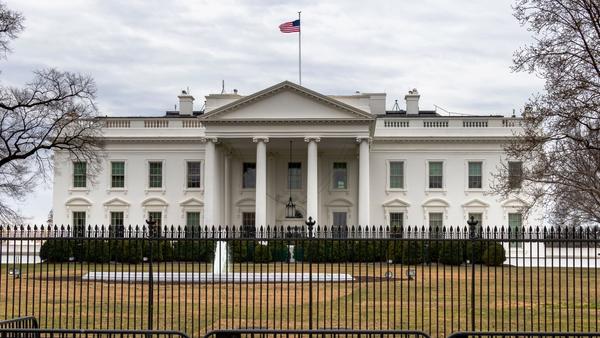Why New Employees Aren’t Sticking Around
Want employees to stay? Start promoting them

While overall company tenure has been increasing over the past couple of years as the labor market increasingly lacks dynamism, new hires are breaking from this trend, becoming less likely to stay with their employers for a full year.
Growing dissatisfaction among workers who were with their companies for 12 months or less spans a range of issues from a lack of work-life balance to career opportunities.
Companies that promote more of their longer-tenured employees also retain more of their new ones, suggesting that new workers are more likely to last if promotions seem more likely.
It’s widely observed that companies’ new employees have higher attrition rates than their longer-tenured employees. While longstanding employees have proven to themselves and their companies that there is a sufficient fit to make things work, it often doesn’t take long for many brand-new employees or their employers to decide they should part ways due to cultural, performance, or other reasons.
This week, we use Revelio Labs workforce data to see how this difference is changing over time, especially in the recent period of declining overall attrition, AKA the “Great Stay.” Specifically, we examine the likelihood that brand-new employees will still be around one year later compared to other employees. For brand-new employees in particular, as we have previously shown, the one-year mark represents a meaningful goalpost after which retention noticeably improves.
The overall trend is clear, as illustrated by tenure levels: Since 2021, the median company tenure has risen from 3.5 years to nearly five years. This has logically coincided with workers becoming increasingly likely to still be with their company one year later, with the share doing so rising from about 85% in 2021 to 88% in 2024.

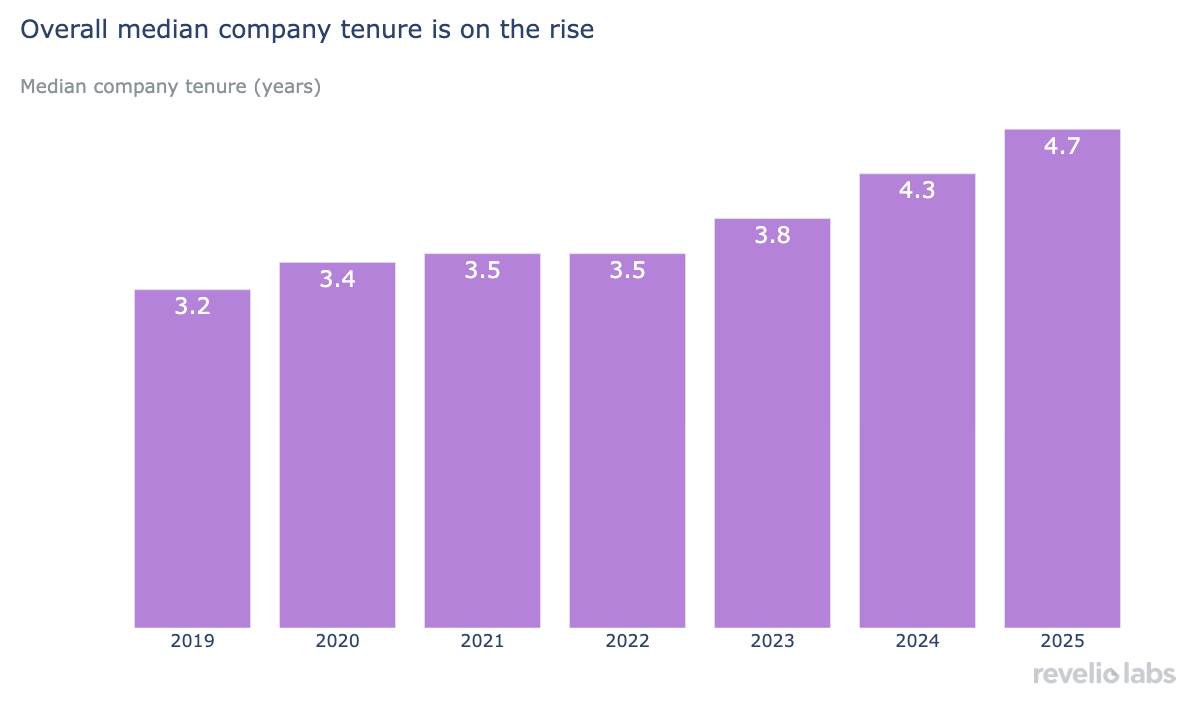
Retention rates among new employees are always lower than they are among established employees, but even that baseline now is slipping. Brand-new hires are now less likely to reach their one-year mark than in the past. The divergence from the set of employees with at least one year of experience with their company at a given time is shown below. While both cohorts fell to lower retention rates during the “Great Resignation” of 2021 and 2022, retention rebounded only among longer-tenured employees, continuing to decline for new employees.

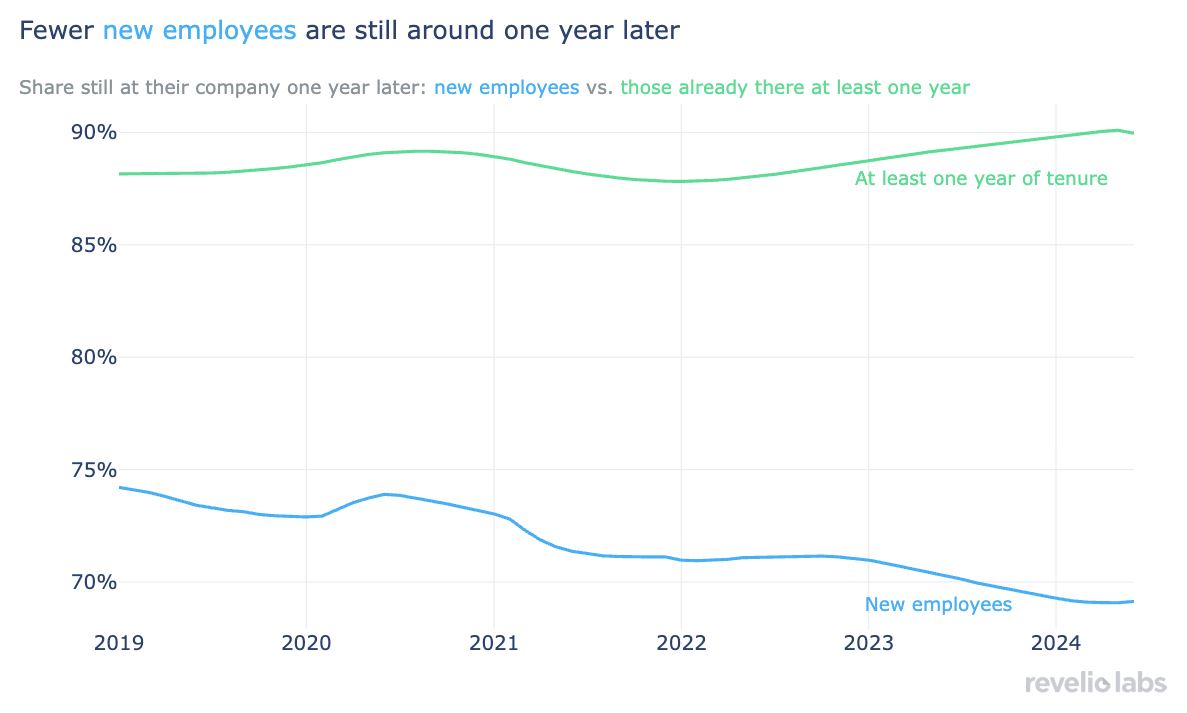
For insights into the most important reasons why workers might leave a company quickly, we compare the company ratings of former employees who left after only 12 months or less with those who stayed longer, controlling for their rating of the company’s business outlook (as well as seniority). Unsurprisingly, ratings given by employees who left quickly are worse across the board. The most salient issues appear to be a lack of work-life balance and DEI, but culture and values, compensation and benefits, and career opportunities are all also rated about 3% lower by short-tenured employees.
Sign up for our newsletter
Our weekly data driven newsletter provides in-depth analysis of workforce trends and news, delivered straight to your inbox!

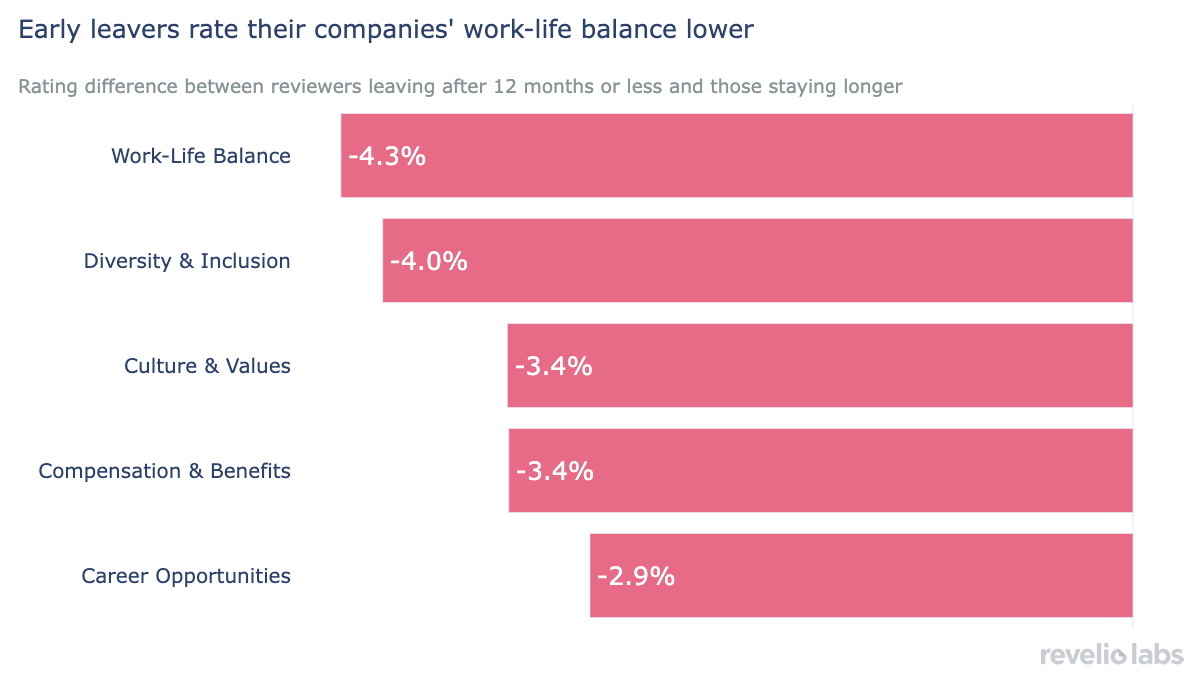
While those who leave early tend to be less satisfied across the board, we also want to understand how their dissatisfaction has evolved over time. What aspects have reportedly worsened most for early leavers amid the decline in new employee retention? Compared to 2022, when new employee retention was last stable, career opportunity ratings have dropped the most (again controlling for business outlook ratings and seniority). Perceptions of companies’ culture and values among this group of employees have also tumbled by about 6% compared to 2022.

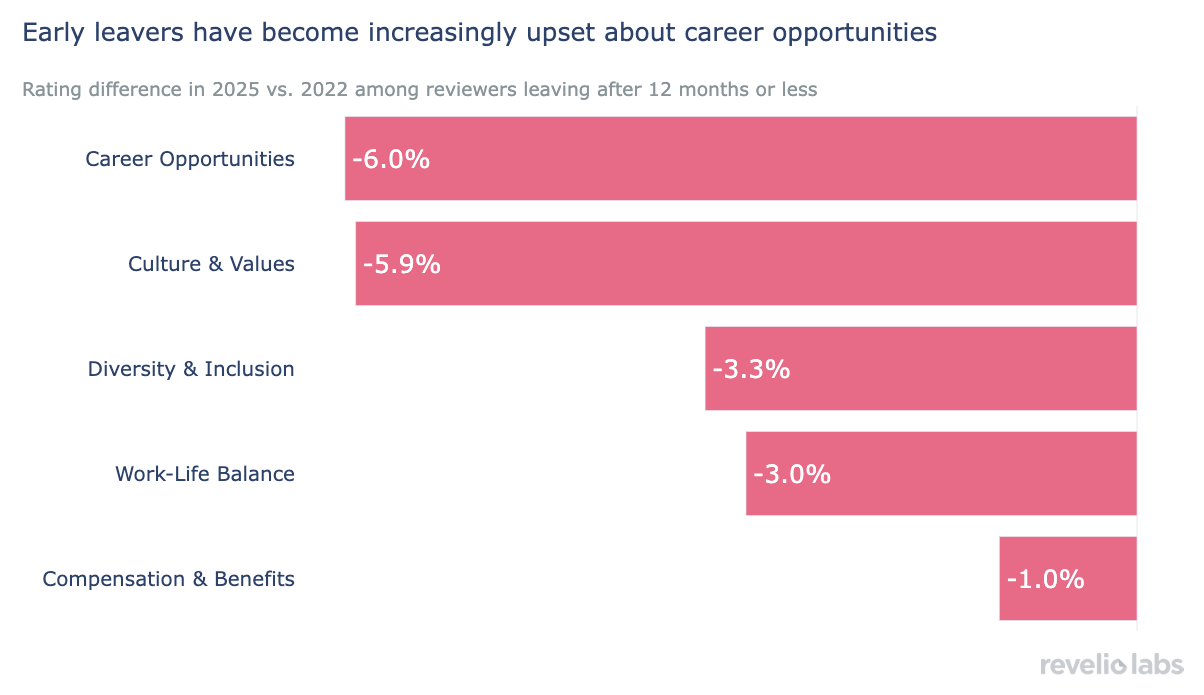
The clearest signal of career opportunity is a promotion. Short of offering more first-year promotions, one possible way to help with new employee retention is by ramping up promotions of longer-time employees. Below, looking at the workforces of about 9,000 companies from 2018 to June 2024, we find a clear association between promotions of longer-tenure employees (those there at least one year) and first-year retention, suggesting that new workers are more likely to stay if promotions are—or at least seem—more likely.

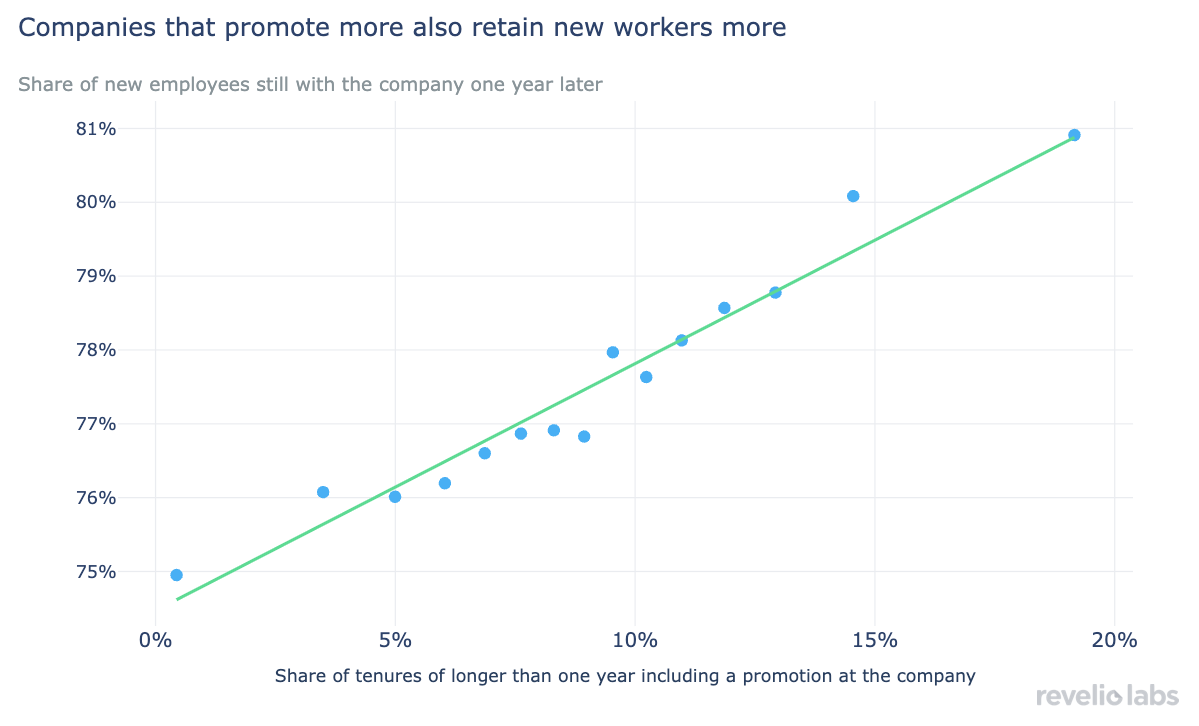
In a period where many companies have succeeded in retaining their longer-tenured talent, many are failing to do so with brand-new employees, whose attrition can be a drag on innovation and new ideas given that they tend to be younger and bring fresh perspectives. Macroeconomic headwinds and layoff strategies that disproportionately impact new employees explain part of the outflows, but employee sentiment has slipped markedly. For employees parting ways with companies not long after being hired, this deterioration is especially pronounced in terms of career opportunities and culture and values, two areas companies can work on enhancing by ensuring promotions occur when the time is right.


